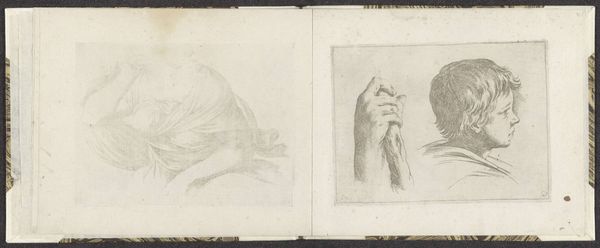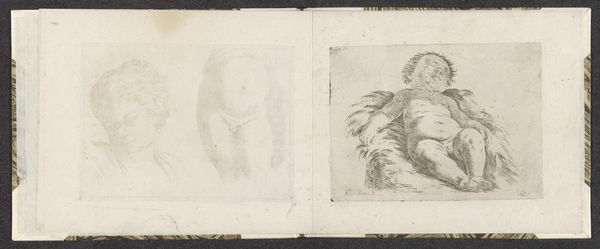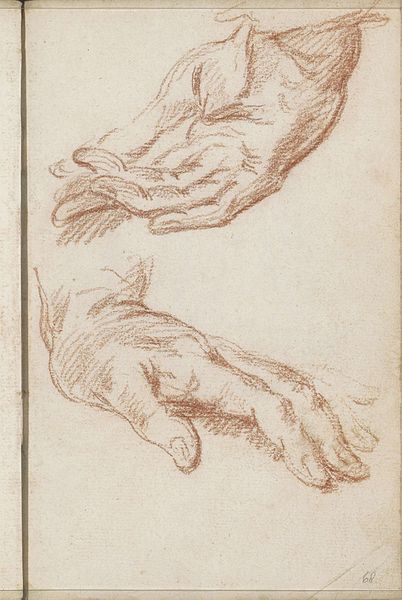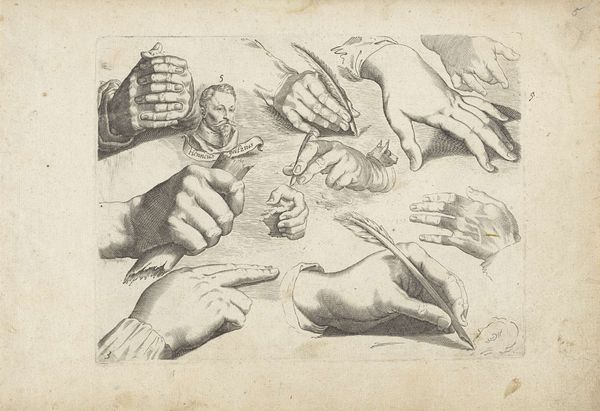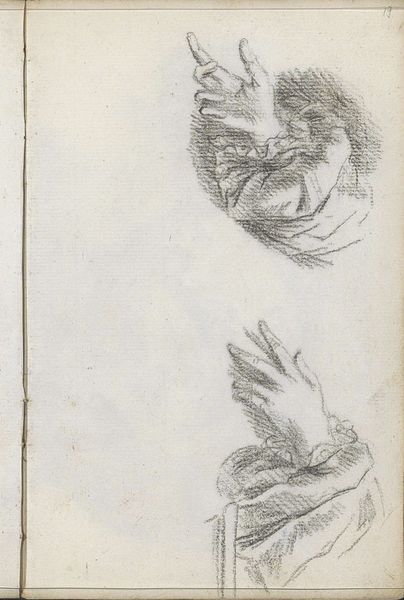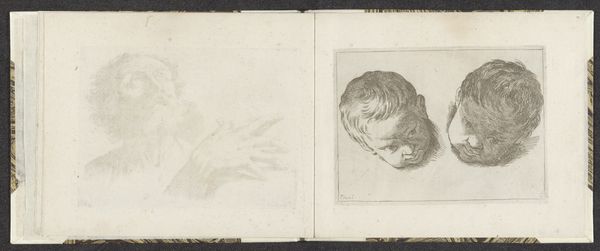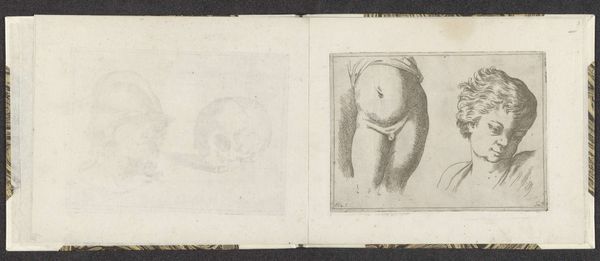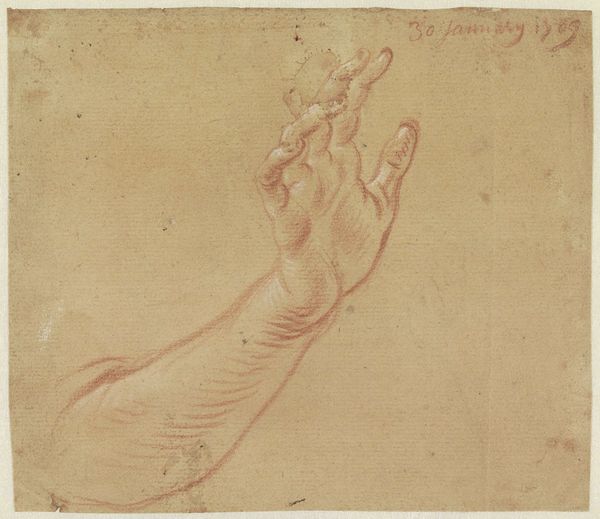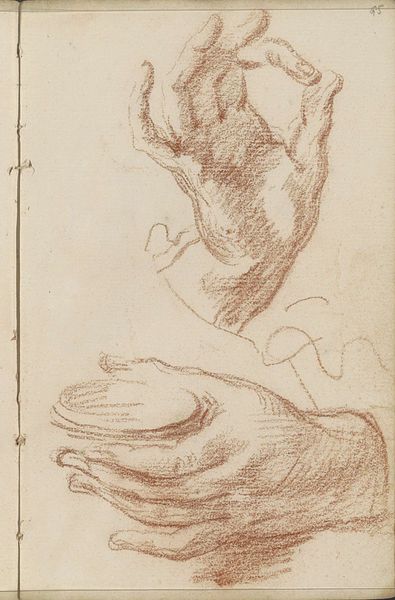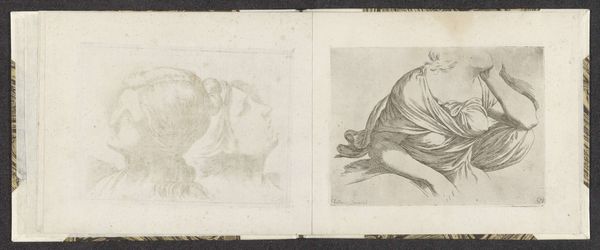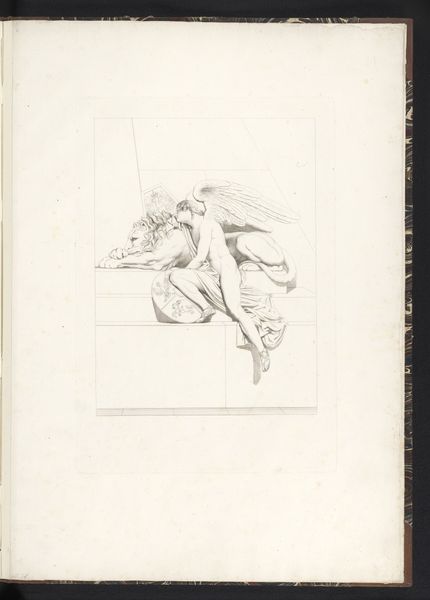
Hand en hoofd van een naar boven kijkende oudere man c. 1663 - 1666
0:00
0:00
drawing, pencil
#
portrait
#
drawing
#
toned paper
#
light pencil work
#
quirky sketch
#
baroque
#
pencil sketch
#
sketch book
#
incomplete sketchy
#
figuration
#
personal sketchbook
#
pencil
#
sketchbook drawing
#
academic-art
#
sketchbook art
#
fantasy sketch
Dimensions: height 142 mm, width 194 mm
Copyright: Rijks Museum: Open Domain
Curator: This drawing, "Hand en hoofd van een naar boven kijkende oudere man," created circa 1663-1666 by Giuseppe Maria Mitelli, presents us with an intimate sketch rendered in pencil. Editor: It strikes me as quite dramatic. The upward gaze, the hand gesturing almost desperately – there's a real sense of yearning. Curator: Absolutely, and what I find compelling is the very visible hand of the artist at work. You can almost feel the movement of Mitelli's hand across the toned paper as he lays down these marks. This kind of sketch provides insight into artistic production. Consider, where would such a drawing have been executed, in what sort of workshop or environment, and what kind of social and financial factors underpinned its creation? Editor: That's interesting, because the sketch itself seems so free. The image hasn't had many layers to it, so one would be able to determine exactly how the art making process happened. I wonder about Mitelli’s intended audience, though. Was this preparatory work for a larger composition? Was the image meant to be viewed more widely by the public, or was this strictly a private endeavor, destined for a collector's album? It begs the question, too, of what Baroque visual culture expected of a "finished" artwork versus a sketch. Curator: Good point, the work's reception is important. Mitelli worked primarily as a printmaker. In contrast to a fully rendered painting, these are pencil marks on paper that emphasize the accessibility of the work. The medium allows an intimacy to be shared with the artist. It asks if something becomes valuable not only by the subject but the means by which it was produced. Editor: So, you’re saying it is the material history that speaks to value here, that it challenges these divisions between fine art and something that comes about from a studio practice. That certainly impacts its value for the Rijksmuseum today. It is positioned for public consumption within a wider institutional history of collecting practices. Curator: Precisely! Looking at the piece, you start to realize just how much material informs function. The rough texture emphasizes human engagement which speaks back to Baroque culture itself. Editor: For me, the lasting impression lies in that raw, emotive quality, skillfully captured within the institutional frames that are intended for the public eye, in places such as here at the Rijksmuseum.
Comments
No comments
Be the first to comment and join the conversation on the ultimate creative platform.
